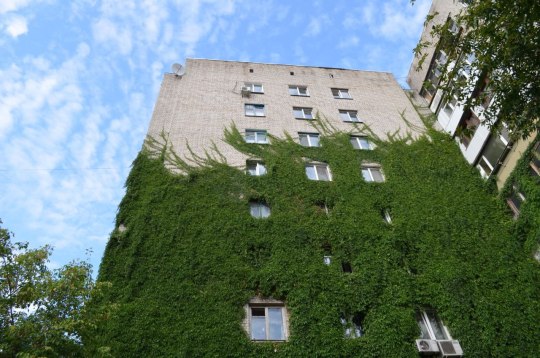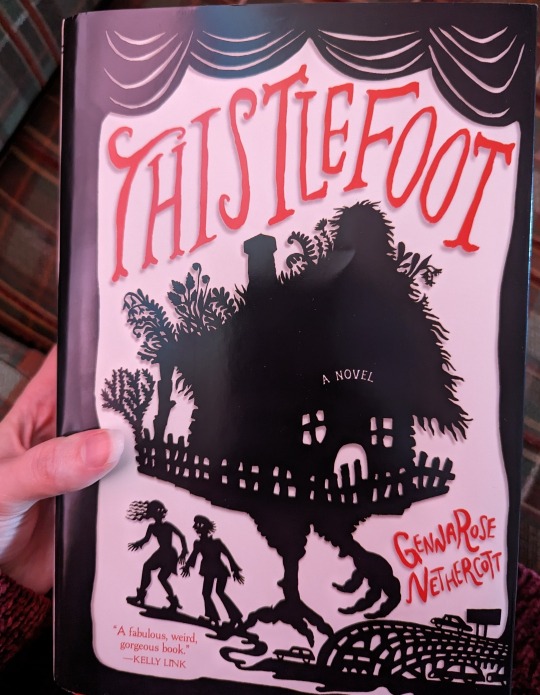#Exploring Kyiv
Explore tagged Tumblr posts
Text


#nature#nature gif#walking and exploring#park#kyiv#ukraine#kyiv gif#Prickly hawthorn#hawthorn#trees#plants#may#may 2025#spring
14 notes
·
View notes
Text

#mine#kyiv#ivy#digital camera#digicam#cybershot#photographers on tumblr#contemporary photography#original photographers#urban exploration#ecobrutalism#abandoned#architecture#naturecore#nostagiacore#dreamcore
163 notes
·
View notes
Text
Mischa Bachinski is a completely wrong spelling of his name. Misha Bachynskyi is the correct form.
To put it simple, it just doesn’t make sense in Ukrainian language at all. Instead of the soft “sh” (ш) that is supposed to be in the name Misha (Міша), for some reason there is “sch” (щ), which not only is less appealing to the ear, but also the name Mischa (Міща) does not exist. Could it have been just made up on purpose? Theoretically yes, but I feel icky about foreigners making up a name that sounds so ridiculous and has no background whatsoever. Besides, it is pretty obvious that they were going for the name Міша, but messed up the transcript. The surname ending -ski is an outdated Russian-sounding version, -skyi is a much more accurate one for a Ukrainian surname. Ukrainian letter "и" never translates as "i", only as "y".
Talias name was completely butchered too, more here (there's actually a wholeass rabbithole from there on). The name of the city where she comes from is spelled wrong (it's supposed to be Kyiv, not Kiev), and so is Misha's (it's Odesa, not Odessa), also it’s Chornobyl, not Chernobyl. Characters frequently say "the Ukraine", even though the name of the country is supposed to be said without the adjective. Basically, not a single Ukrainian name was spelled correctly, and many things about Ukraine also were completely messed up.
And these are not just wrong spellings! These are the remnants of Russian oppression, specifically in Soviet times, when all non-Russian names had to be transcripted from Russian, all non-Russian languages were stripped of their originality, forcefully made to sound more Russian, and advocating for the use of your language could get you deported or killed (and now the same thing is happening the occupied territories of Ukraine, Sakartvelo, Chechnya etc.). Using the correct version of Ukrainian names is at least a sign of respect and recognition.
I am not saying that back in 2008 when the musical was made the authors deliberately decided on using the Russian forms of city names and, well, people names. Back at the time the voices of people advocating for correct forms were not heard, and this didn’t seem like a big deal. But in the context of the modern world it is very important, specifically because there is a literal full-scale genocidal war in Ukraine right now. As a Ukrainian, the nuance of those names and spelling matters a lot to me, and it is the same way for other Ukrainian fans I’ve met. Some didn’t want to get into the musical specifically because of these issues, plus the fact that Misha is kind of a harmful stereotype for Slavic people in general, which is yet another topic to explore at some point in the future. And he is still the BEST representation we’ve got and I love him dearly.
I believe that using a correct form of his name is a battle worth fighting
#i used uppercase for the post that’s how you know shit's serious#misha bachynskyi#misha not mischa#mischa bachinski#misha rtc#ride the cyclone#rtc
404 notes
·
View notes
Text
My next post in support of Ukraine is:
Next site, since it's Kyiv's birthday today, is an article all about the amazing city of Kyiv. Happy birthday, Kyiv.
#StandWithUkraine
#СлаваУкраїні 🇺🇦🌻

Another reminder, I will block any accounts that respond to my posts in support of Ukraine with lying muscovy propaganda. I blocked one replying to this post. Kyiv existed when moscow was still a swamp. It's NOT the "Mother of all "russian" cities." That title is nothing but lying propaganda. Kyiv existed before the "russian" empire, and it will continue to exist after the "russian" federation has collapsed into well-deserved dust. Fuck "russia."
40 notes
·
View notes
Text
I recently watched a YouTube video of a Ukrainian performance on “America’s Got Talent.” A friend sent me the link, promising it would amaze me – and it did. You can find the video by searching “Amazing holographic 4D cube show AGT.” However, when the show’s host, Howie Mandel, said, “America’s got love for the Ukraine,” I cringed. The phrase “the Ukraine” implies it’s a territory, not a sovereign country. It’s just Ukraine – the largest country in Europe, an important nation in its own right, and sadly, a place the world still knows too little about.
Ukraine is often branded as a place of corruption and gangsters, and Hollywood doesn’t help when it makes the villains Ukrainian. After living in Kyiv for years, I’ve experienced something very different. The country I know is filled with talented, hardworking, and warm people who possess an incredible sense of humor. Since Russia’s full-scale invasion, too many people think Ukraine is nothing but a war zone.
I recently heard Mstyslav Chernov, the director of the Oscar-winning documentary “20 Days in Mariupol,” say that Americans often ask, “Is there more to Ukraine than the war?” I’ve had similar frustrating conversations abroad, with people asking, “Is that war still going on?”
Before the pandemic, I hosted many foreigners visiting Kyiv, often to explore IT opportunities. Questions like “Is it safe there?” or “Do they have the internet?” were common. Even more surprising are comments from the Ukrainian diaspora. In Canada, home to the largest Ukrainian community outside of Ukraine, some people who left decades ago have no idea how their country has advanced. “They have shopping malls in Kyiv?” or “Do they have electric cars?”
Yes, Ukraine faces challenges, and many people live on modest salaries. But there is a growing middle class, and the big cities capture imaginations. Every guest I hosted in Kyiv was blown away.
One misconception that always made me giggle is when people ask, “What will we eat there?” The food scene in Kyiv is incredible. There’s been an explosion of amazing restaurants, and dining out here can compete with New York or London any day. Even during the war, new places are opening, and the food is phenomenal. If you want to have a laugh, stand-up comedy clubs are popular – even in English. Where there’s laughter, there’s hope.
I had a friend from California visit twice, and when he returned to Los Angeles, people teased him, asking if he’d visited the land of Borat. He said Ukrainians are just like people in California – trying to build businesses, raise families, and live their lives. That’s the thing: Ukraine is not some backward nation that craves war.
Before the full-scale invasion, Kyiv was on track to become Europe’s next hotspot, and I’d have bet anything on that happening. This brutal war has set everything back. Ukraine is not about war. It’s about modernity, freedom, and new culture. It’s a country brimming with energy.
Ukraine has suffered from a poor reputation for as long as I can remember. I first discovered Kyiv nearly 17 years ago, and I’ve been saying ever since that Ukraine needs to work on its brand. Of course, now that we’re in the third year of the full-scale invasion, things are different. Air raid sirens can go off at any time, and it can be scary when Ukrainian air defenses shoot down drones and missiles. During those moments, you head to the bomb shelter. But life continues.
One of the biggest misconceptions about Ukraine is that everyone here is poor and miserable. Most people don’t have easy lives, and yes, poverty exists, but that’s true in many places. I’m originally from South Africa, where poverty exists on a different scale. In Ukraine, no one lives in shantytowns. When millions of Ukrainians fled across the borders, the European host nations were often surprised to see modern cars, fashionable clothes, and the latest smartphones. It’s a high-tech nation, and the level of online convenience here would surprise any foreigner.
There’s also a wave of innovation happening. Ukraine is poised to become a global leader in military drone technology. Artists are creating, entrepreneurs are developing cool tech, new restaurants are opening, and foreign investors are exploring opportunities. Ukraine is a miracle. Even as hypersonic missiles and kamikaze drones rain down across the country, many have decided to stay, continuing their lives, albeit in a very different way. The economy needs to keep running. Life needs to go on to keep the wheels turning.
Many passionate, dedicated people are working on projects to benefit and support Ukraine. Some have been involved long before the full-scale invasion, driven by a deep belief in the country and its people. Since 2018, I’ve been part of a team of artists — Ukrainian and international — creating a storytelling film project that captures life in modern Kyiv. “We Are Ukraine” is a story about extraordinary people in an extraordinary time — people who have chosen to continue to work, live, get married, have children, and laugh, against all odds. It’s not a war story, a story about death and demise. It’s a story about life, a love letter to Kyiv, which shows us what the world would miss out on if Kyiv would cease to exist.
Freedom, independence, and identity are the culmination of modern humanity, forged over centuries through struggle, creativity, and resilience. Everything else in civil society flows from these values. Russia’s war in Ukraine is a global wake-up call – a reminder that these values must be nurtured and protected. Ukrainians are showing that not only can they defend these values, but by continuing to live, laugh, and love, they are defying those who seek to destroy them.
youtube
44 notes
·
View notes
Text
Frank Bruno's Boxing as actual Punch Out characters
I have read a post made by @thorkelsongirl about this game called Frank Bruno's Boxing, which is basically a Punch-Out bootleg according to them with Frank Bruno, a British boxer who once defeated Mike Tyson twice. This game's main opponents have some pretty interesting characters who are similar to the actual Punch Out characters while others are made entirely 'original' so to speak. So I have the privilege to recreate these characters if they were actual (and official) characters in the Punch-Out lore. Of course, I won't be adding Frank Bruno in this series of mine since I am not comfortable about adding real-life people (except if I have to make a new boxer inspired by the character but not this one).
So, here are the opponents which I would like to call Branch D, each of them spit into different circuits of course:
(Minor Circuit)
Canadian Crusher as Bud Lumberjack
From: Ontario, Canada
Age: 30
Weight: 438 lbs.
Height: 6'3
Rank: #2
Fights: 44-0
Bud is the little brother of Bear Hugger from Ontario who works full-time as a lumberjack for a local sawmill. Unlike his nature-loving older brother who hangs out with bears, Bud is also a city guy sometimes who does vlogs about protecting the environment from deforestation, pollution, and natural disasters. He is also the one who teaches his dear older brother how to use a cell phone and a computer. His skills in the ring are the same as those of Bear Hugger, but they are different with a few new moves he came up with himself.
Fling Long Chop as Fang Lee
From: Aberdeen, Hong Kong
Age: 21
Weight: 145 lbs
Height: 5'7
Rank: #3
Fights: 32-1
Fang was once a kung fu artist but later he adapted his skills into boxing and entered the WVBA. He is a student under Hoy Quarlow and is Dragon Chen's fellow classmate. Fang is considered a very friendly guy with an undisputed appetite yet he still keeps in shape. He is a mukbanger and has his own YouTube channel where he does mukbang videos as well as kung fu instructional videos with Dragon Chen as his regular guest on his channel.
Andra Puncheredov as Mr. Baker
From: Kyiv, Ukraine
Age: 33
Weight: 233 lbs
Height: 6'5
Rank: #5
Fights: 56-1
Mr. Baker is world-renowned chef from Ukraine and is known for making delicious delicacy. He is known to be an old-soul with a habit of spoiling anyone with his food, including Fang. He is also drinking buddies with Soda Popinski and Aran Ryan.
(Major Circuit)
Tribal Trouble as Queen Nzinga II
From: Northern Angola, Africa
Age: 20
Weight: 125 lbs
Height: 5'6
Rank: #1
Fights: 69-0
Queen Nzinga II is the direct descendant of the first Nzinga who is known to be a strong woman with a strong will. She is intellectual in the arts of science and music and was the prime minister of Northern Angola until she became a boxer to represent her country.
Frenchie France as Madam Spider
From: Rouen, France
Age: 25
Weight: 130 lbs
Height: 5'7
Rank: #4
Fights: 54-3
Madam Spider is a mysterious woman whose beauty has a deceptive nature hidden beneath. She has a fondness for spiders and gothic fashion. No one has ever tried to interact with her... well some who survive in conversation with her.
Ravioli Mafiosi as Don Marco
From: Sicily, Italy
Age: 33
Weight: 234 lbs
Height: 6'0
Rank: #1
Fights: 70-3
Don Marco is your typical Italian godfather who doesn't mind getting his hands dirty but he likes to be fair to those who he respects as a true fighter. He is a man of culture and honor, with his signature grin and cigar in his mouth.
(World Circuit)
Antipodean Andy as Dean Outback
From: Lithgow, Australia
Age: 27
Weight: 170 lbs
Height: 5'9
Rank: #2
Fights: 29-0
Dean is an outdoor guy who loves exploring, adventures and of course, the animals. He has his own TV show on National Geographic which is dedicated to the beauty of the natural Aussie nature. He is a very rowdy and excited guy who doesn't mind the danger due to his positive attitude. He is also a very muscular guy when it comes to boxing and he was also a former contestant on Ninja Warrior.
Peter Perfect as Stanley Gold
From: Palm Springs, Florida
Age: 32
Weight: 245 lbs
Height: 6'1
Rank: Champion
Fights: 89-1
Stanley is the undisputed champion of Branch D and not only is he an influential actor but he is also secretly working as a drag queen under the persona, Golden Lily. He and Super Macho Man are quite the famous rivals in both the ring and in showbiz but unlike Macho's vanity and pride, Stanley is a simple rich man with a heart of gold and a perfect smile.
15 notes
·
View notes
Text
Light in the Attic (Twitter; Website) has revealed a project up for pre-order, "Even the Forest Hums: Ukrainian Sonic Archives: 1971-1996."
"The first comprehensive collection of its kind, this release explores the flourishing Ukrainian music scene of the late 20th Century. Featuring Ukrainian artist Maria Prymachenko’s beloved and iconic folk paintings, the project was lovingly assembled by Shukai Records, Kyiv-based writer Vitalii “Bard” Bardetsky, David Mas, (“DBGO”), Mark “Frosty” McNeill, and Light in the Attic A portion of the proceeds from sales of the project will be donated to Livyj Bereh, a Kyiv-based volunteer group working to rebuild in the regions affected by the ongoing war in Ukraine.
For more info on the project, click the website link above for the page.
If you want to hear the first two singles, check out these videos.
I might have to splurge on a pre-order. This sounds amazing.
youtube
youtube
#Ukraine#Ukrainian music#music history#Light in the Attic#Even the Forest Hums#Ukrainian sonic archives#music#Youtube
25 notes
·
View notes
Text
Ivan and Phoebe by Oksana Lutsyshyna
Ivan and Phoebe is a novel about a revolution of consciousness triggered by very different events, both global and personal. This is a book about the choices we make, even if we decide to just go with the flow of life. It is about cruelty, guilt, love, passion – about many things, and most importantly, about Ukraine of the recent past, despite or because of which it has become what it is today.
The story told in Oksana Lutsyshyna’s novel Ivan and Phoebe is set during a critical period – the 1990s. In the three decades that have passed since gaining independence, Ukraine has experienced many socio-political, economic, and cultural changes that have yet to be fully expressed. The Revolution of Dignity in 2014 marked a pivotal moment in the country’s history, as it signaled a shift towards European integration and a strong desire to distance itself from Moscow. Prior to this, Ukrainian culture had remained overshadowed by Russian influence, struggled to compete for an audience and was consequently constrained in exploring vital issues.
77 days of February. Living and dying in Ukraine
"77 Days," is a compelling anthology by contributors to Reporters, a Ukrainian platform for longform journalism. The book, published in English as both an e-book and an audiobook by Scribe Originals.
"77 Days'' offers a tapestry of styles and experiences from over a dozen contributors, making it a complex work to define. It includes narratives about those who stayed put as the Russians advanced, and the horror they encountered, like Zoya Kramchenko’s defiant "Kherson is Ukraine," Vira Kuryko’s somber "Ten Days in Chernihiv," and Inna Adruh’s wry "I Can’t Leave – I’ve Got Twenty Cats." The collection also explores the ordeal of fleeing, as in Kateryna Babkina’s stark "Surviving Teleportation '' and "There Were Four People There. Only the Mother Survived."
It also highlights tales of Ukrainians who created safe havens amidst the turmoil, such as Olga Omelyanchuk’s "Hippo and the Team," about zookeepers safeguarding animals in an occupied private zoo near Kyiv, and one of Paplauskaite’s three pieces, "Les Kurbas Theater Military Hostel," depicting an historic Lviv theater turned shelter for the displaced, including the writer/editor herself.
In the Eye of the Storm. Modernism in Ukraine 1900’s – 1930’s
This book was inspired by the exhibition of the same name that took place in Madrid, at the Museo Nacional Thyssen-Bornemisza, and is currently at the Museum Ludwig, located in Cologne, Germany.
Rather than being a traditional catalogue, the publishers and authors took a more ambitious approach. Rather than merely publishing several texts and works from the exhibition, they choose to showcase the history of the Ukrainian avant-garde in its entirety – from the first avant-garde exhibition in Kyiv to the eventual destruction of works and their relegation to the "special funds" of museums, where they were hidden from public view.
These texts explain Ukrainian context to those who may have just learned about the distinction between Ukrainian and Russian art. Those "similarities" are also a product of colonization. It was achieved not only through the physical elimination of artists or Russification – artists were also often forced to emigrate abroad for political or personal reasons. Under the totalitarian regime, discussing or remembering these artists was forbidden. Archives and cultural property were also destroyed or taken to Russia.
"The Yellow Butterfly" by Oleksandr Shatokhin
"The Yellow Butterfly" is poised to become another prominent Ukrainian book on the themes of war and hope. It has been listed among the top 100 best picture books of 2023, according to the international art platform dPICTUS.
The book was crafted amidst the ongoing invasion. Oleksandr and his family witnessed columns of occupiers, destroyed buildings, and charred civilian cars. Shatokhin describes the book’s creation as a form of therapy, a way to cope with the horrors. "During this time my vision became clearer about what I wanted to create – a silent book about hope, victory, the transition from darkness to light, something symbolic," he explains.
Although "The Yellow Butterfly" is a wordless book, today its message resonates with readers across the globe.
A Crash Course in Molotov Cocktails by Halyna Kruk
A Crash Course in Molotov Cocktails is a bilingual poetry book (Ukrainian and English) about war, written between 2013 and 2022, based on Halyna’s experience as an author, volunteer, wife of a military man and witness to conflict.
The Ukrainian-speaking audience is well-acquainted with Halyna Kruk – a poet, prose author and literature historian. Kruk is increasingly active on the international stage, with her poetry featured in numerous anthologies across various languages, including Italian, French, Swedish, Norwegian, Portuguese, Spanish, Polish, English, German, Lithuanian, Georgian and Vietnamese.
For an English-speaking audience, her poetry unveils a realm of intense and delicate experiences, both in the midst of disaster and in the anticipation of it. The poems are succinct, direct, and highly specific, often depicting real-life events and individuals engaged in combat, mourning, and upholding their right to freedom.
134 notes
·
View notes
Text
Who Invented Big Airplanes: The Minds Behind the Giants of the Sky

Do you know how the big airplanes were invented? It's a fascinating story that spans decades of innovation, engineering breakthroughs, and sheer determination. Big airplanes, also known as large aircraft models, have become a cornerstone of modern aviation, revolutionizing how we travel and connect with the world. But who were the brilliant minds that brought these aviation models to life?

The journey of the big airplane model began in the early 20th century when aviation pioneers first dreamed of creating aircraft that could carry more passengers and cargo over longer distances. It was a time of intense experimentation and competition, with inventors and engineers racing to build the next big thing in aviation.

One of the key figures in the invention of big airplanes was Igor Sikorsky. Born in Kyiv, Ukraine, in 1889, Sikorsky was an aviation visionary who designed the world’s first multi-engine airplane, the Russky Vityaz, in 1913. This aircraft model was groundbreaking because it demonstrated that it was possible to create a large airplane model with multiple engines, which was essential for carrying heavier loads and flying longer distances. The success of the Russky Vityaz paved the way for the development of even larger aircraft, leading to Sikorsky’s later designs, like the Ilya Muromets, which became the world’s first four-engine bomber.

But Sikorsky wasn’t alone in his quest to build big airplanes. In the United States, Donald Wills Douglas Sr. played a crucial role in the evolution of large airplane models. Douglas founded the Douglas Aircraft Company in 1921, and it wasn’t long before his company became synonymous with innovation in aviation. One of the most significant contributions from Douglas was the DC-3, introduced in 1935. This airplane model revolutionized air travel with its ability to carry 21 passengers in comfort, a feat previously unheard of in commercial aviation. The DC-3 set the standard for modern aircraft and remains one of the most iconic aviation models ever created.

Another major milestone in the history of big airplanes came with the Boeing 747, often referred to as the "Queen of the Skies." The 747 was the brainchild of Joe Sutter, an engineer at Boeing, who led the team that designed this enormous aircraft. First flown in 1969, the Boeing 747 was a true game-changer, capable of carrying more than 400 passengers across the globe. This large airplane model not only made international travel more accessible but also solidified Boeing’s position as a leader in the aviation industry. The 747 remains one of the most successful aircraft models, with variants still flying today.

These early innovators laid the groundwork for the modern giants of the sky we see today. Today, the Airbus A380 holds the title of the largest passenger airplane model ever built. Introduced in 2007, the A380 can carry over 800 passengers in an all-economy configuration. The development of this behemoth required a multinational effort, with teams from across Europe contributing to its design and construction. The A380 represents the pinnacle of what large airplane models can achieve, offering unparalleled capacity and comfort for long-haul flights.
The invention of big airplanes wasn’t just about building larger aircraft; it was about pushing the boundaries of what was possible in aviation. These pioneers didn’t just create bigger planes; they created new opportunities for people to connect, explore, and experience the world in ways that were once unimaginable.
As aviation continues to evolve, the legacy of those who invented big airplanes lives on. From Sikorsky’s early experiments to the modern marvels of Boeing and Airbus, these aircraft models have forever changed the face of travel. So the next time you board a flight, take a moment to appreciate the incredible history behind the big airplane model that’s carrying you to your destination. The sky’s the limit, thanks to the visionaries who dared to dream big.
22 notes
·
View notes
Text

If you're looking to take a breather from real life but still keep it celebrating Jewish culture, I came across this book released last year, "Thistlefoot" by GennaRose Nethercott.
An enchanted adventure illuminated by Jewish myth and adorned with lyrical prose as tantalizing and sweet as briar berries, Thistlefoot is a sweeping epic rich in Eastern European folklore: a powerful and poignant exploration of healing from multi-generational trauma told by a bold new talent.
The Yaga siblings—Bellatine, a young woodworker, and Isaac, a wayfaring street performer and con artist—have been estranged since childhood, separated both by resentment and by wide miles of American highway. But when they learn that they are to receive an inheritance, the siblings agree to meet—only to discover that their bequest isn’t land or money, but something far stranger: a sentient house on chicken legs.
Thistlefoot, as the house is called, has arrived from the Yagas’ ancestral home outside Kyiv—but not alone. A sinister figure known only as the Longshadow Man has tracked it to American shores, bearing with him violent secrets from the past: fiery memories that have hidden in Isaac and Bellatine’s blood for generations. As the Yaga siblings embark with Thistlefoot on a final cross-country tour of their family’s traveling theater show, the Longshadow Man follows in relentless pursuit, seeding destruction in his wake. Ultimately, time, magic, and legacy must collide—erupting in a powerful conflagration to determine who gets to remember the past and craft a new future.
#jumblr#jewish#jews#judaism#nesyapost#jewish culture#jewish history#jewish reading#jewish folklore#book recommendation#slavic folklore#reading list#jewish books#books#thistlefoot#feel bad i haven't made a new post in 10 days but everything has been tense#i haven't been reading anything
100 notes
·
View notes
Text
I translated two more of my angbang fics that were previously only posted in Ukrainian.
https://archiveofourown.org/works/63281125
https://archiveofourown.org/works/63282730
They didn’t get much reaction, if any, I don’t know if it’s because Ukrainian angbang fandom is just that small or because my writing is that bad, so think I should tell more about how these fics were written.
Both are part of Modern AU where Melkor is a rock star and Mairon is a jeweler (and they mostly focus on Melkor, though I almost wrote another part from Mairon’s POV to explore his backstory and his feelings).
I didn’t put much thought into why I wanted this story to be set in the modern world, but it was probably because I was so eager to write something about angbang, yet at the same time, I was scared I was too stupid for writing canonverse (and I probably am, but that doesn’t stop me anymore 🤣)
I also wanted to write something without angst and blood, without war, tortures, and Silmarils, because I wanted Mairon and Melkor to be together and happy so badly, with no one having the power to separate them or stand in the way of their love. So I just sat down and started typing whatever came to mind.
The first part focuses on Melkor, how he lived without Mairon and how his life changed once they met. He also proposes to him there. It’s long and T-rated, and while I wouldn’t say the plot is particularly interesting, I still enjoyed writing it.
The second fic came later, when I felt like writing more, and this time, I wanted smut. It’s about their very first time together, so technically, the events happen earlier, but it’s still recommended to read the first part first to better understand their relationship.
I wasn’t sure if I should translate these works into English, but I received such kind comments on my other works, and it encouraged me.
Also when I was translating and editing, spending a few evenings on it, I could hear russian drones flying outside my window in Kyiv and air defense shooting them down. And all I could think about was how irritating and unfair it was that I couldn’t focus on something I love… because of the war.
Yet, my biggest source of comfort right now is two fictional war criminals whom I like to imagine being in a soft vanilla relationship.
Make it make sense.
14 notes
·
View notes
Text




#roses#rises gif#rose gif#garden#park#walking and exploring#flowers#flowers gif#plants#greens#nature#nature gif#kyiv#kyiv gif#ukraine#kyiv park
8 notes
·
View notes
Text
My latest episode of This Is Not A Drill is out now!
This week I'm joined by Ukrainian war reporter Illia Ponomarenko, where we discuss the Battle for Kyiv & his new book 'I Will Show You How It Was: The Story of Wartime Kyiv'.

Available now on all podcast platforms!
24 notes
·
View notes
Text
Russia and the U.S. agreed Tuesday to start working toward ending the war in Ukraine and improving their diplomatic and economic ties, the two countries’ top diplomats said after talks that reflected an extraordinary about-face in U.S. foreign policy under President Donald Trump. In an interview with The Associated Press after the meeting, U.S. Secretary of State Marco Rubio said the two sides agreed broadly to pursue three goals: to restore staffing at their respective embassies in Washington and Moscow, to create a high-level team to support Ukraine peace talks and to explore closer relations and economic cooperation. [...] No Ukrainian officials were present at the meeting, which came as the beleaguered country is slowly but steadily losing ground against more numerous Russian troops in a grinding war that began nearly three years ago. Ukrainian President Volodymyr Zelenskyy said his country would not accept any outcome from the talks since Kyiv didn’t take part, and he postponed his own trip to the kingdom scheduled for Wednesday. European allies have also expressed concerns that they are being sidelined.
8 notes
·
View notes
Text
My next post in support of Ukraine is:
Next site, is another Ukrainian artist. Ivan Stepanovych Marchuk (Іван Степанович Марчук). He was born in the village of Moskalivka in Ternopil Oblast in 1936. He's the founder of the painting technique known as Pliontanism. See link for what that is. He's also an "Honored Artist of Ukraine, laureate of the Shevchenko National Prize, Honorary Academician of the National Academy of Arts of Ukraine, and an Honorary Citizen of Ternopil and Kyiv." In 1959, he joined an underground group of artists who explored "unsanctioned art, history, music, literature, and religion." The KGB began to harass him in the 1970s. They disapproved of the dark colors used in a lot of his paintings as "socialist realism" was supposed to use bright colors. They also believed he had Ukrainian nationalist sympathies. He was unable to take part in exhibitions as the Union of Artists of the USSR refused to allow him to join. He didn't have his first exhibition until 1980 in Kyiv, which was not sponsored by that group. In 1985, he was able to travel, and he went to Czechoslovakia in 1988, and then to Australia, and after that, Canada. His artworks were well received in those countries. While he was traveling, the Union of Artists of the USSR finally granted him membership, though they neglected to tell him. His first official exhibition in his home country was in 1990. After Ukrainian Independence in 1991, his artworks, which had not been valued by the soviet union, became highly valued by Ukraine. He received the Shevchenko National Prize in 1997. He finally moved back to Ukraine in 2011. He has created over 5,000 artworks, half of which are in countries other than Ukraine. His artworks have also been used on Ukrainian coins and stamps.
#StandWithUkraine
#СлаваУкраїні 🇺🇦🌻




14 notes
·
View notes
Text
Dear Kyiv Independent reader,
This summer, we opened the Kyiv Independent merch store as a way for our readers to show support for our mission of delivering locally sourced, independent journalism from Ukraine to the world.
Now, our first-ever winter collection is here, and we wanted to highlight more than just festive celebrations.
This collection spotlights the resilience of Ukrainian culture, a heritage that has faced — and continues to face — the threat of erasure.
For generations, Ukrainians have kept the spirit of their unique Christmas traditions alive, even when those traditions were suppressed under Soviet rule. Now, as Ukraine continues to defend its identity and freedom, these customs hold even deeper meaning.
We were inspired by three customs — the enchanting “Carol of the Bells,” the symbolic didukh wheat sheaf, and the vibrant vertep puppet theater — and reimagined them in a series of unique designs. Each piece tells a story of resilience, artistry, and the enduring spirit of Ukraine.
Through the eyes of talented Ukrainian artists Albina Kolesnichenko and Polina Olkhovnikova, these traditions are reimagined with a contemporary touch.
Explore the collection of hoodies, T-shirts, and bags here, and find a gift for yourself or a loved one this winter. Each purchase will directly support the Kyiv Independent and help us to continue our work.
Check out the winter collection here.
28 notes
·
View notes